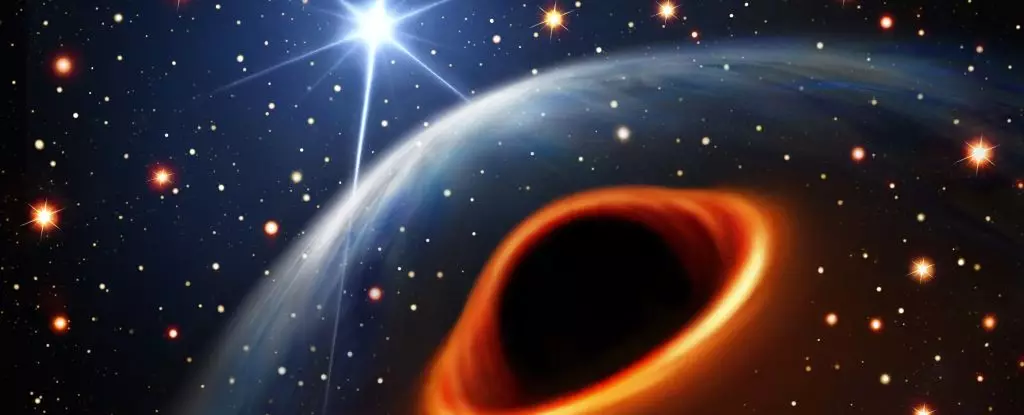In the vastness of space, the dance of celestial bodies often reveals more than meets the eye. A recent discovery involving a peculiar red giant star, positioned 5,825 light-years from Earth, has stirred the scientific community. This star exhibits an unexpected orbital pattern, seemingly in harmony with an unseen companion. What makes this observation particularly fascinating is the absence of any detectable light from this elusive partner. This enigma, identified as G3425, not only captivates with its unusual movements but also offers a tantalizing glimpse into the existence of low-mass black holes, which have long puzzled astronomers.
The mystery surrounding G3425 takes a fascinating turn with the revelation that the invisible companion possesses a mass approximately 3.6 times that of our Sun. This finding strongly indicates that the undiscovered object is a black hole, nestled within a poorly understood region of astrophysics known as the “lower mass gap.” Unlike their more massive cousins, which have been extensively studied, low-mass black holes have been elusive, with very few candidates identified below five solar masses. The prevailing theories suggest that either our detection methods are lacking, or that certain factors limit the formation of such black holes.
The European Space Agency’s Gaia mission adds a modern touch to our quest for understanding. With its comprehensive mapping of the Milky Way, including the motions and velocities of stars, Gaia enhances our ability to spot anomalies in stellar behavior, such as G3425. The interactions between visible stars and their invisible partners raise essential questions about the nature and existence of smaller black holes in our galaxy.
The orbit of G3425 provides critical insights into the dynamics of binary systems. Observations suggest that the red giant star orbits its companion in a relatively stable and circular path. This behavior stands in stark contrast to other known black hole binaries, where elliptical orbits typically signify a more chaotic history. The implications of this circular orbit are significant; they challenge existing theories regarding the processes that lead to black hole formations post-supernova.
Current astrophysics models predict that the supernova explosion, which results in the birth of a black hole, usually creates disturbances significant enough to alter the orbits dramatically. However, the stability of G3425’s orbit suggests that the system has remained undisturbed for an extended period, hinting at alternative evolutionary pathways for black hole formation. The unique nature of G3425 not only highlights the intricacies of these cosmic relationships but also prompts critical reevaluation of our understanding of binary star evolution.
The challenge of detecting low-mass black holes is a significant barrier to advancing our knowledge. Black holes do not emit light in the traditional sense; they are often identified by their gravitational effects on nearby objects. Without an active growth phase, during which material spirals towards a black hole and emits X-rays, smaller black holes are nearly impossible to detect. G3425 stands as a reminder that such objects might exist abundantly in our galaxy, remaining concealed yet influential.
To uncover the secrets of low-mass black holes, researchers need to broaden their investigative approach. By examining a diverse array of stellar systems and employing sophisticated observational techniques, scientists can potentially isolate more examples similar to G3425. Statistical analysis of these findings could lead to a more comprehensive understanding of the mechanisms behind black hole formation and the peculiar characteristics of low-mass black holes.
The discovery of G3425 underscores the importance of collaborative efforts in modern astrophysics. Teams from various institutions have combined cutting-edge technology and innovative methodologies to unveil the mysteries shrouding this cosmic entity. By leveraging data from Gaia and employing spectroscopy to analyze stellar movements, scientists have taken significant strides in understanding the relationship between mass, gravity, and the elusive nature of black holes.
As we venture further into the cosmic dark, the continued exploration of G3425 and similar phenomena may illuminate the enigmatic realm of low-mass black holes, reshaping our understanding of the universe. Each discovery holds the potential for profound insights into the fabric of reality, guiding us toward a deeper comprehension of the celestial dance unfolding around us.


Leave a Reply